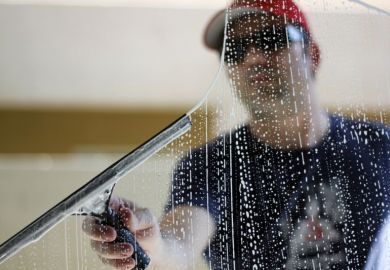Every year, observers of US higher education are surprised anew as the admissions statistics for elite universities are released. While rates have dipped into the single digits for several of the most prestigious private institutions (Harvard University is now accepting just 6 per cent of undergraduate applicants), they are also quite low across the sector generally. My alma mater, Vanderbilt University, currently admits 12.5 per cent of aspiring undergraduates; when I applied 15 years ago, the figure was 50 per cent. It is these institutions – the selective and highly selective private universities – that the students and parents considered in Class Warfare are obsessed with. Lois Weis, Kristin Cipollone and Heather Jenkins argue that the university application process in elite public and private high schools is of interest beyond the impact it has on the anxieties and aspirations of individual students and parents; it is emblematic of a broader effort to assert and secure a privileged class identity when economic security is tenuous.
Class Warfare is an ethnography of student life and the college application process at three high schools: public, single-sex private and co-educational private. The authors focus on the top 10 to 20 per cent of students at each school – a primarily white population – but also examine the experiences of low-income black students at the private schools, who are marginalised across both race and class lines. While students are equally ambitious at all three, interesting distinctions exist. At the public school, parents invest in education by buying a home in an affluent suburb with “good schools”, but are less likely to micro-manage their children’s application process. In contrast, parents at the private schools are highly involved to the point of intrusion. The authors showcase the disturbing extent to which students are aware of the need to play the admissions game: one reflects that universities are used to seeing a scholar/athlete or scholar/musician, but his hook is that he is (gasp) all three.
One thing I wondered was how many of the book’s findings are affected by its focus on students who are not just socio-economically elite but academically elite. In Class Warfare, class privilege enables the academically gifted to achieve their aspirations by ensuring admission to elite private institutions. Even more disturbing is the way class privilege facilitates opportunity for students of lesser merit; a topic obviously beyond the scope of this book but no less deserving of attention.
Covering an impressive amount of ground, Class Warfare does an excellent job of mapping the intricate ecosystem in which students are enmeshed, from school to parental gossip networks, and also offers a complex, noteworthy discussion of how race and class dynamics combine to compound marginalisation for outsider minority students. It is really three studies in one, with each study conducted by a different author; at times, each study’s relation to the central thesis and to the others can be unclear. Still, given its ambitious scope, multi-site and multi-racial focus, this is a welcome addition to research on the US university admissions system’s role in perpetuating inequality.
Class Warfare: Class, Race, and College Admissions in Top-Tier Secondary Schools
By Lois Weis, Kristin Cipollone and Heather Jenkins
University of Chicago Press, 288pp, £63.00 and £21.00
ISBN 9780226134895, 34925 and 35083 (e-book)
Published 9 May 2014





